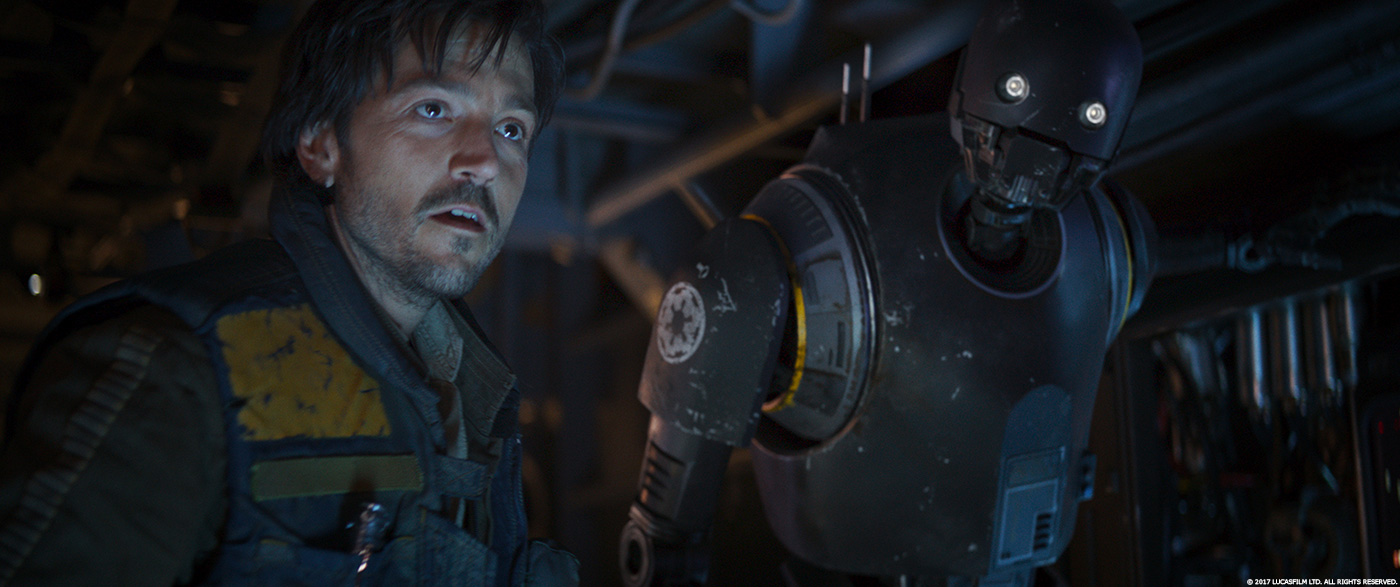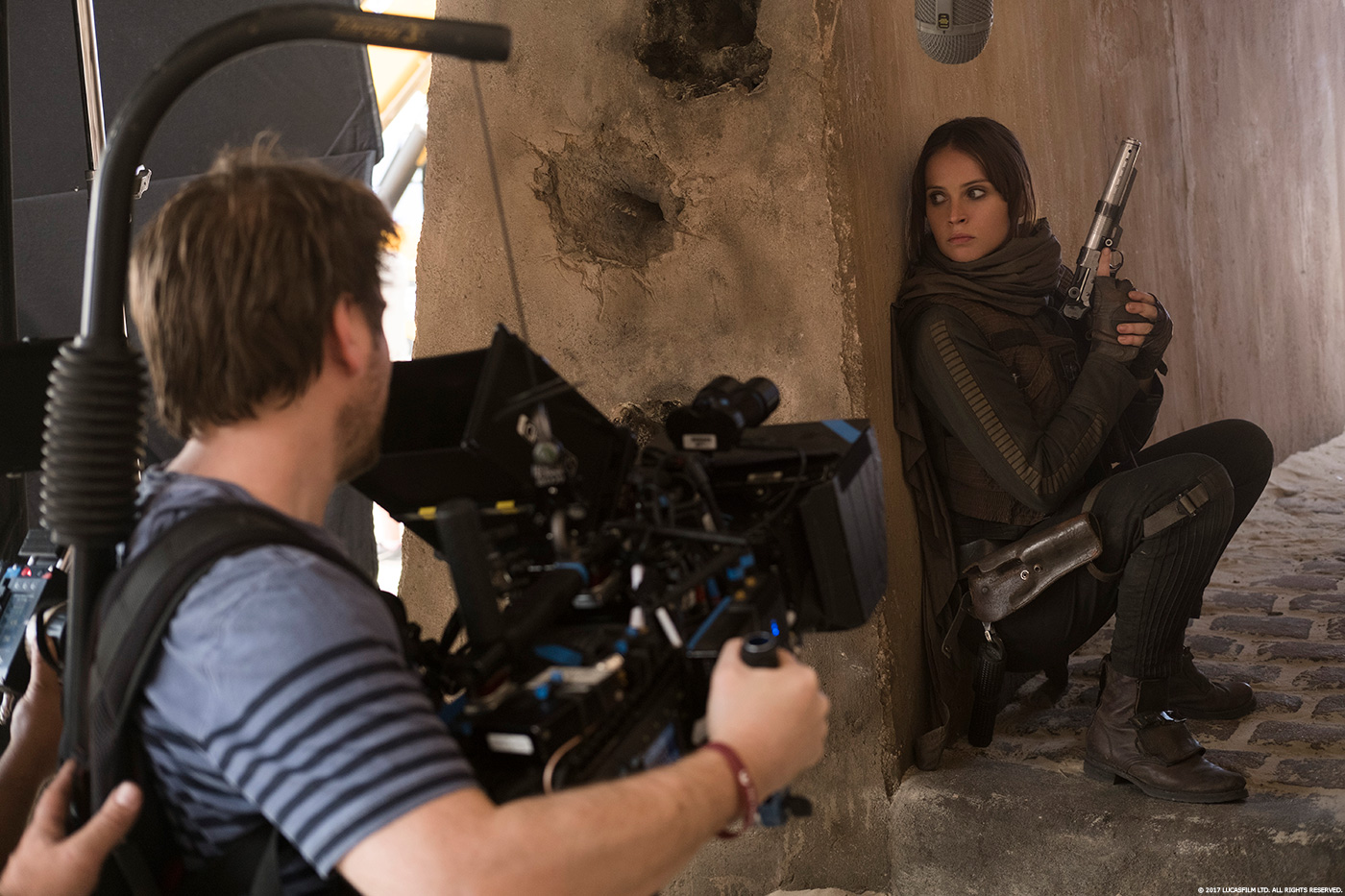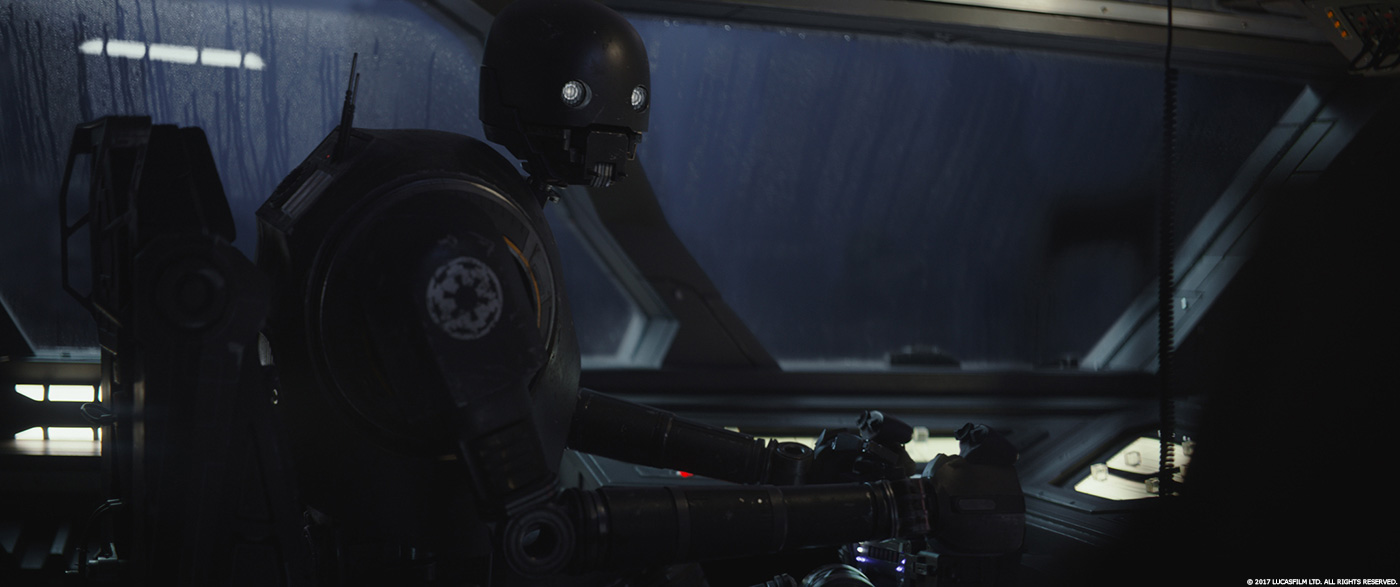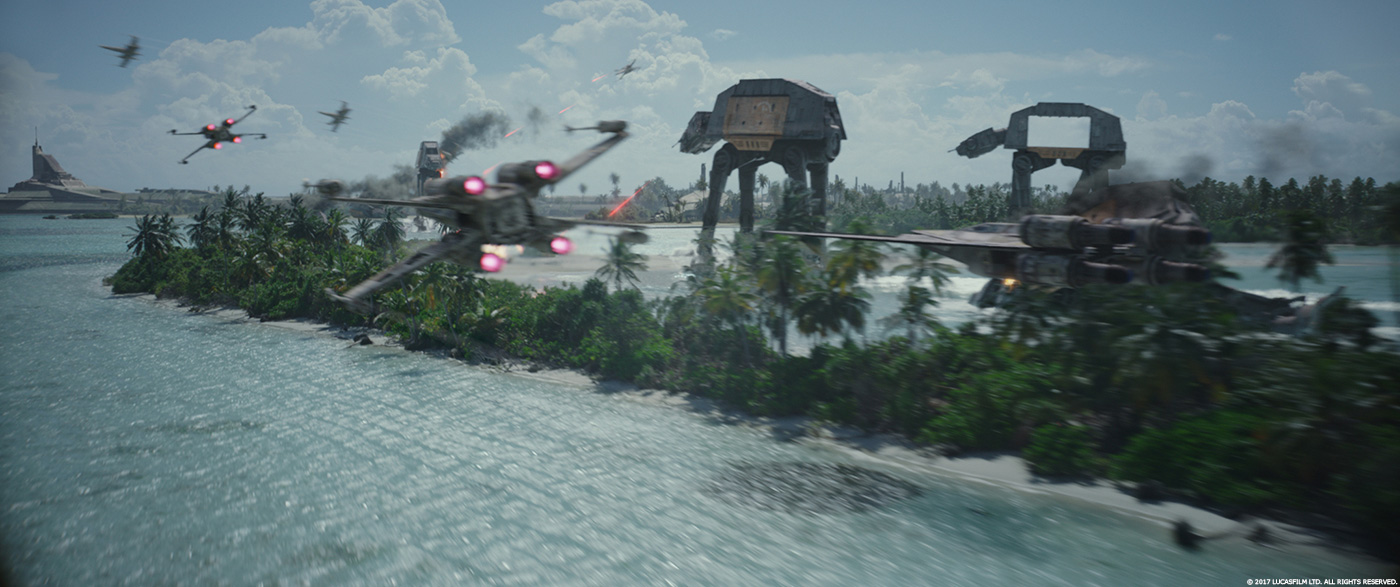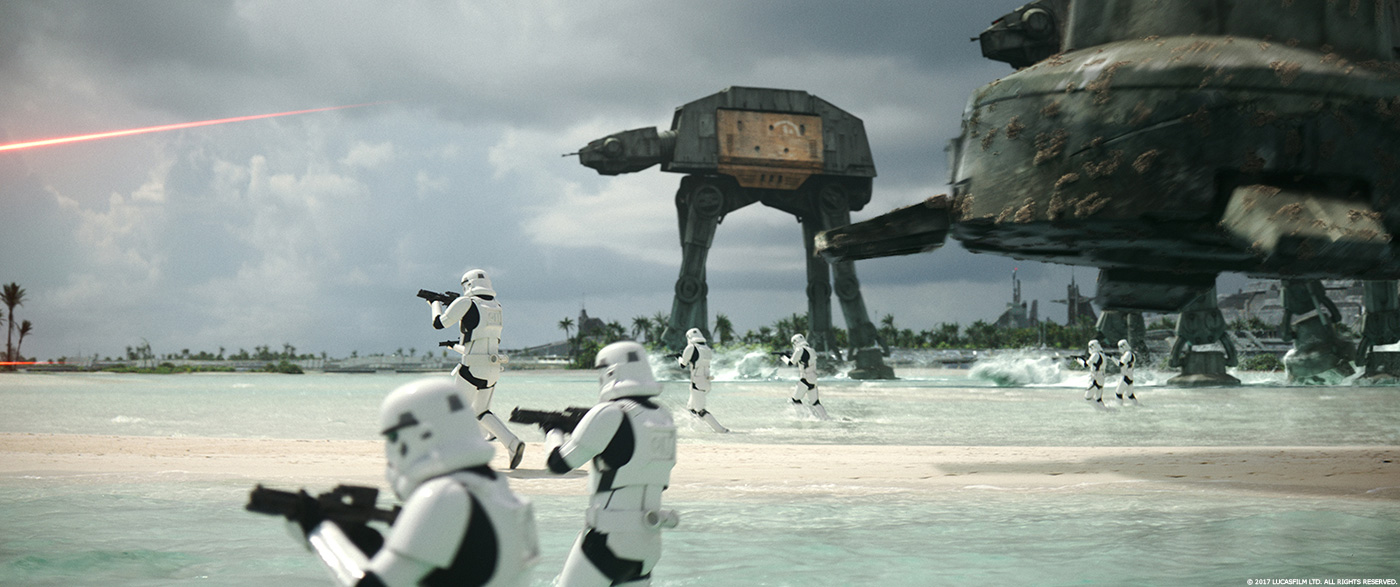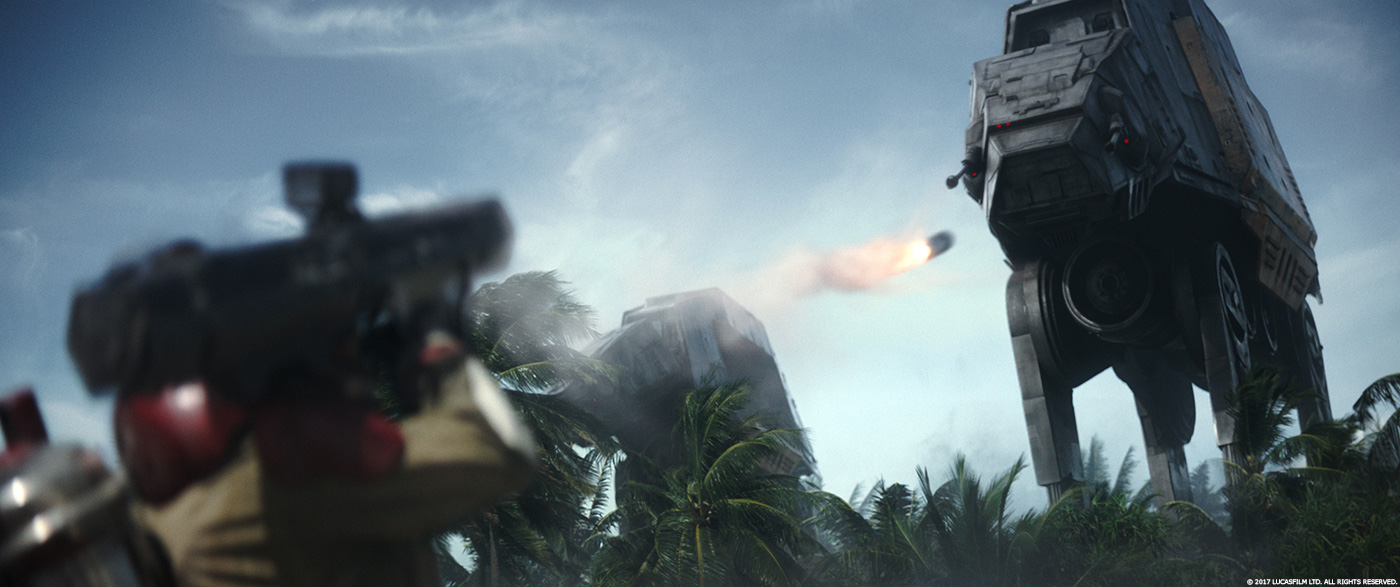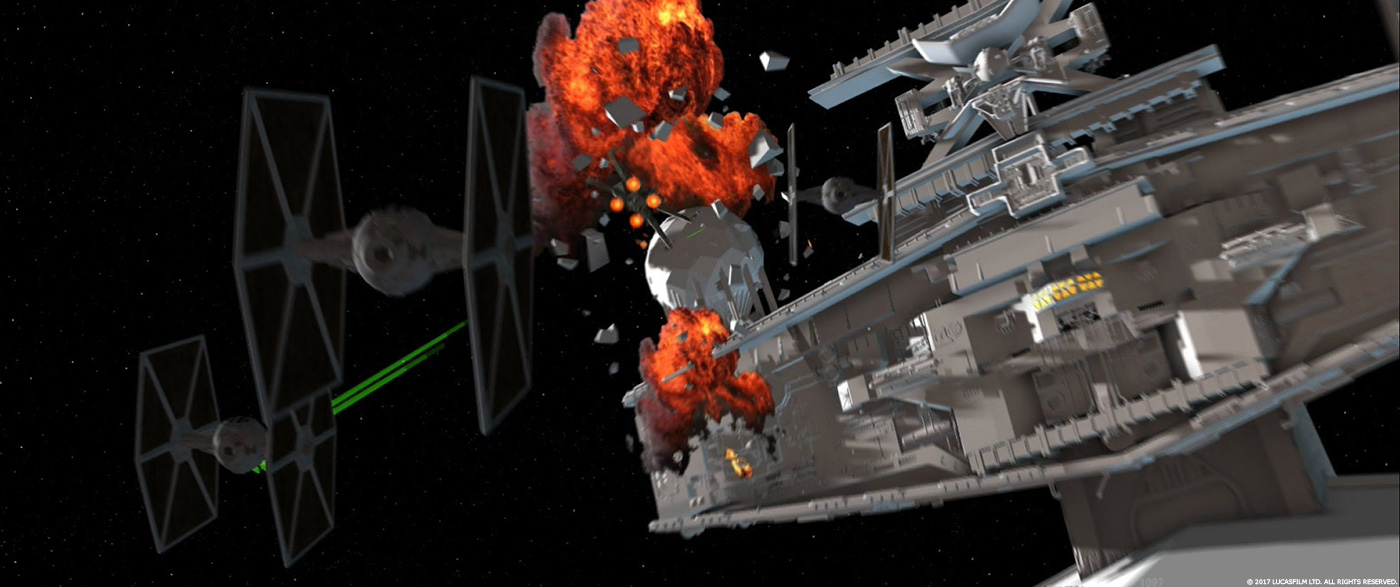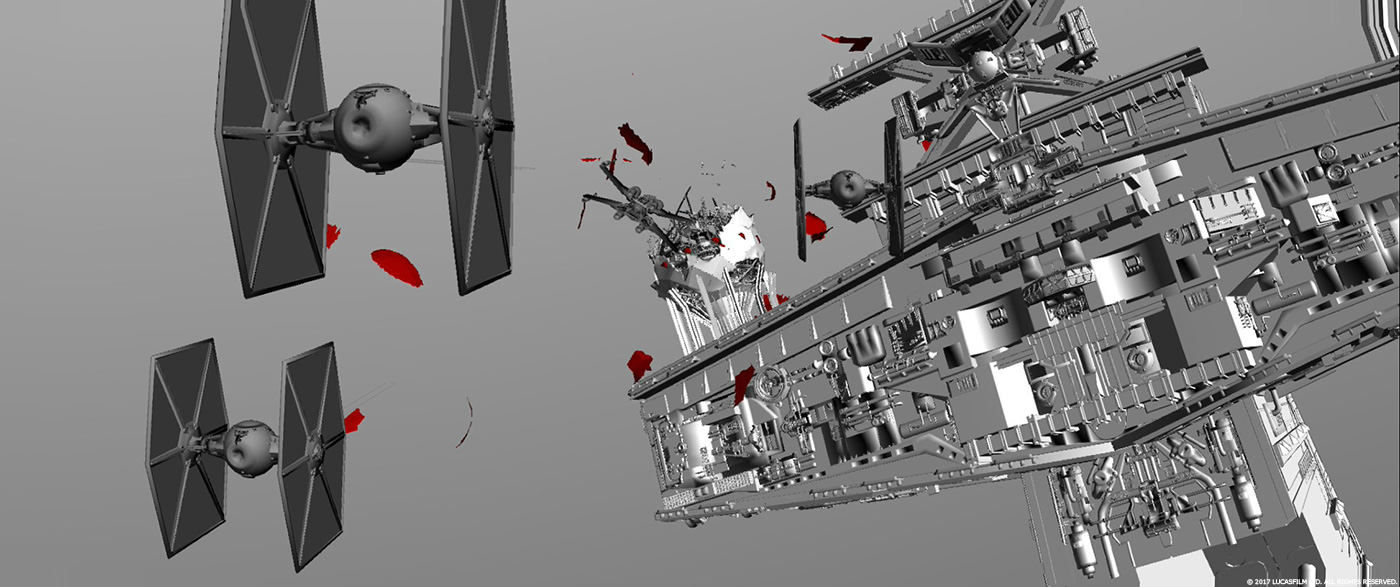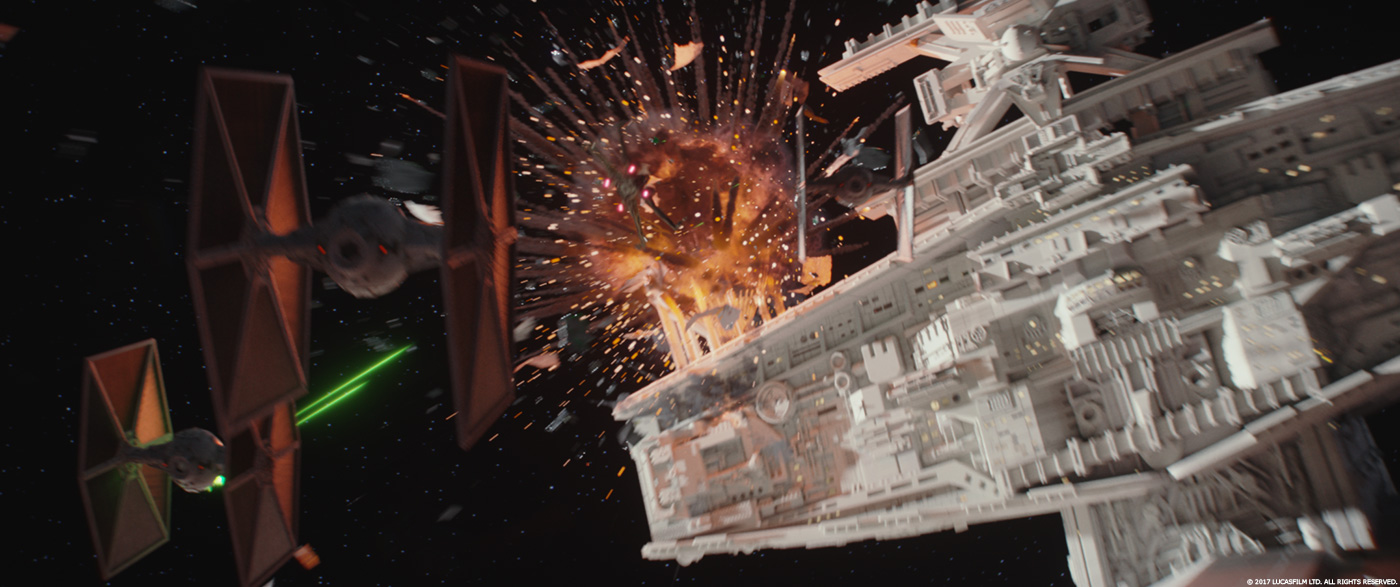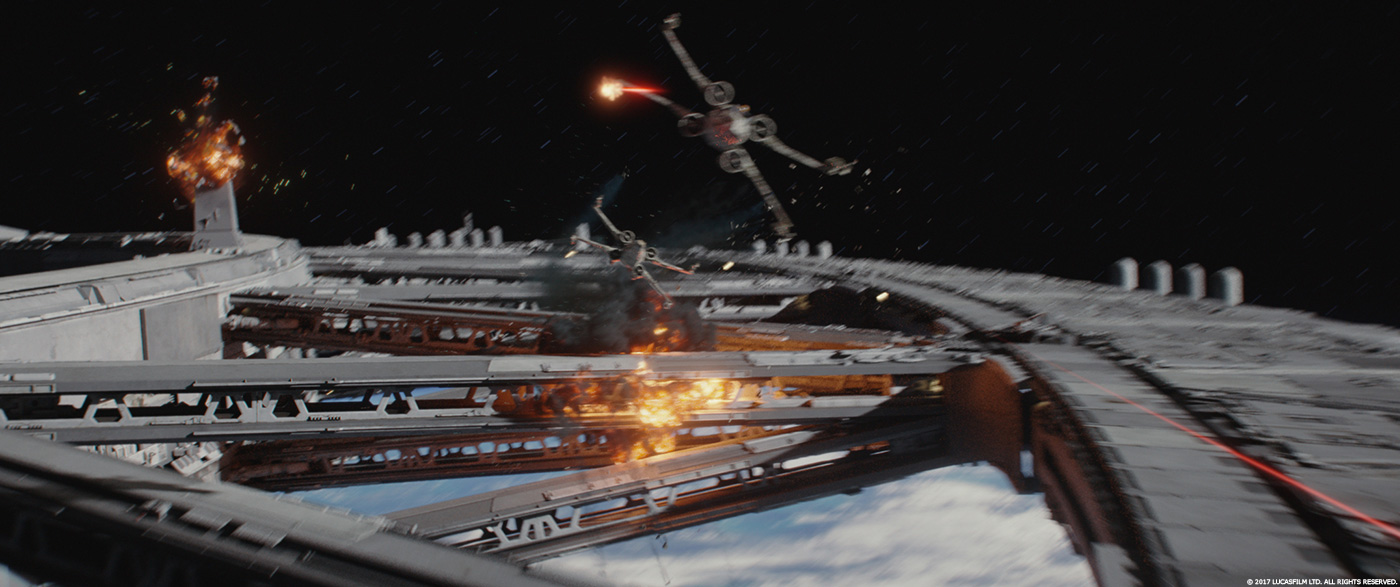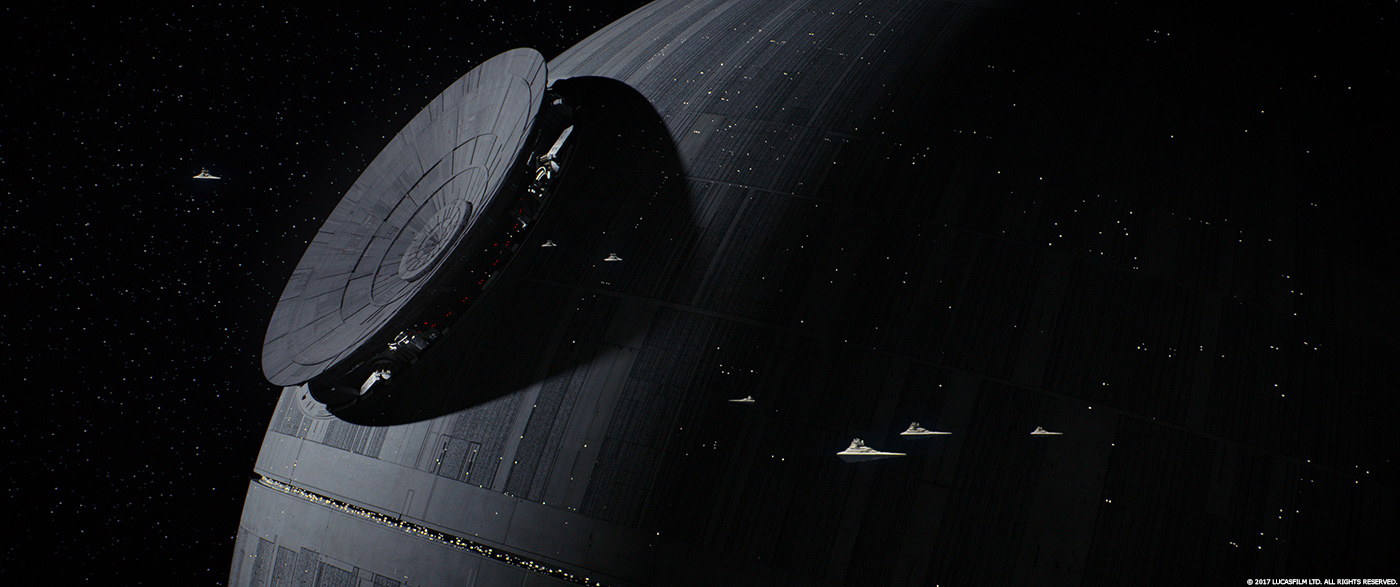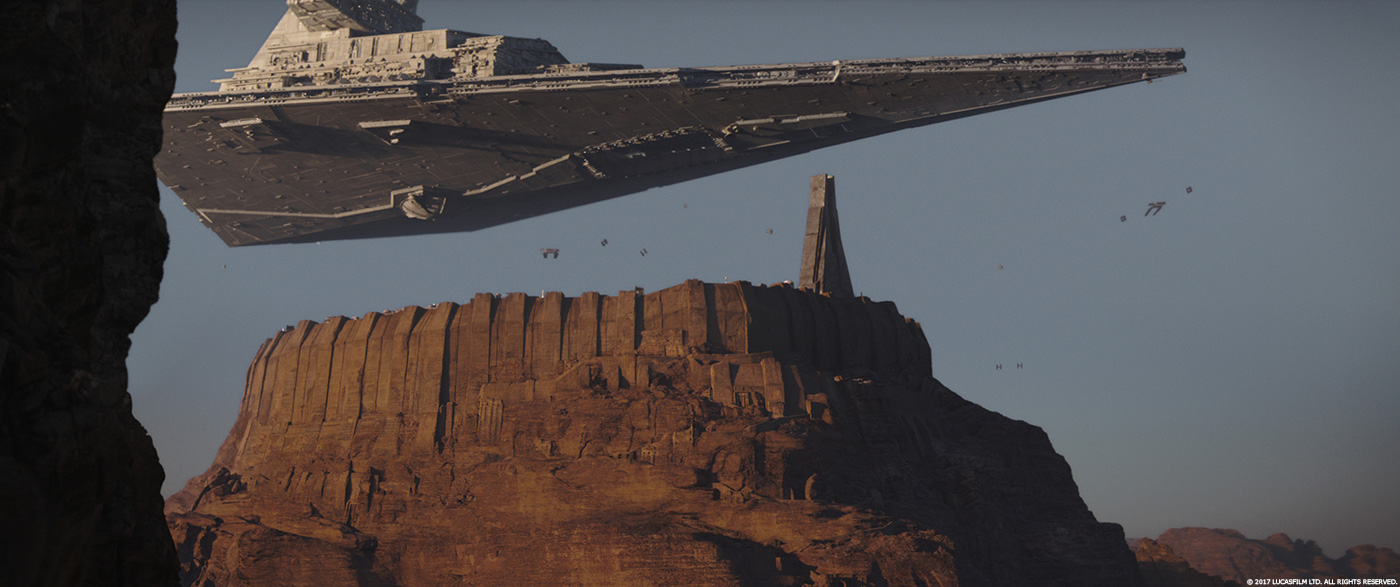This summer, Hal Hickel told us about the ILM‘s animation work on WARCRAFT. He is back today to talk about ROGUE ONE: A STAR WARS STORY.
What was your feeling to be back on the Star Wars universe?
I was the perfect age (13) when the original film came out in 1977, and I was already interested in animation and visual effects, so it was a huge event for me. Being able to contribute to this film franchise is amazing, and I’m always thrilled to be involved with it.
How did you work with director Gareth Edwards and VFX Supervisor John Knoll?
ROGUE ONE was the sixth film I’ve done with John. We get along great, and always seem to be on the same page about creative issues. This was our first time working with Gareth, and it was a real pleasure. Gareth comes from a visual effects background, so he’s “one of us”, he speaks our language. As I usually do, I met with Gareth early on to discuss various challenges in the production, and then was on set for scenes involving animation.
How did you organize the work with the VFX supervisors and your team?
We split the work amongst all four ILM studios (San Francisco, Vancouver, London, and Singapore). As the animation supervisor, I worked with all of the VFX supervisors on the show (Mohen Leo in London, and Nigel Sumner and John Knoll here in San Francisco).
This movie introduce a new droid, K-2SO. Can you tell us more about its design?
K2 was designed by the Neal Scanlan’s creature group, first as drawings, then as a full sized sculpture. Then he was modeled in CG by Landis Fields here at ILM. During that process, we refined the design, including small adjustments to proportions, detailing, and working out a lot of the problems with the way the shoulder and hip mechanisms worked.
Also, I took a pass at designing new eyes for K2. The ones in the original design were flat white discs, and we thought maybe his eyes could be a bit more expressive. I made that single white disc into a self-illuminated ring, that suggested an iris. I made that ring part of a sort of camera lens structures, with various internal lenses, and baffles to give it depth. Then there was a little sort of “pupil” at the center with it’s own illumination, and which could dilate.This entire “lens” structure sat inside the eye area, behind a large front lens, and could swivel around, giving the eyes the ability to move. That’s something that Star Wars droids haven’t previously been able to do.
Did you received specific indications and references for his animation by Gareth Edwards?
Gareth and I talked a lot about K2. He’s sort of an “anti-C3PO”. He’s more downbeat, more sarcastic. He doesn’t really care about what people think (except for maybe Cassian). Then of course Alan Tudyk, who played K2 brilliantly on set, and provided the voice really brought it all together.
Can you explain in detail about its rigging?
Kelvin Chu rigged K2, and as with all anthropomorphic mechanical rigs, figuring out how to get all the parts to move without breaking, or penetrating each other is a big challenge. I’ve learned my lesson (on IRON MAN, and PACIFIC RIM), that when rigging mechanical humanoids, you need to give the riggers the time they need to really get the shoulders and hips right. Those are the biggest problem areas because they have the greatest degree of movement. For instance with K2, if you look closely at the space where the legs join the pelvis, you’ll see that there is a whole array of tiny pistons in there, connecting the two parts together. Kelvin worked hard to make all those mechanisms function.
As his face is fixed, how did you manage the challenge for his emotions?
Gareth was very interested in exploring ways to make K2’s face expressive. Historically in the Star Wars universe, we don’t see droids with expressive faces (mouths that can smile or frown, eyebrows that move). One of the hallmarks of the Star Wars aesthetic, is that things generally look very practical, with good industrial design that makes sense, and not a lot of whimsy. We tried various things with the face, and at one point we had little metal shutters over the eyes that could function like eyelids, giving K2 the ability to blink. In the end, even though they gave him more “human” expression, and we could rationalize them as a sort of “protective” mechanism for the eyes, the feeling was that it pushed K2 just a little too far into cartoon territory. In the end, we took out the blinking, but kept the ability to rotate the eyes.
The movie is full of creatures. How did you work with the team of Neal Scanlan?
We worked directly with Neal’s group on K2’s design, and also on Bor Gullet. Bor Gullet started out as an entirely practical animatronic that we had planned to just add a single CG tentacle to. Then the scene changed quite a bit, and we needed the ability to move him, and to have much larger, and more extensive tentacles. Our London studio under VFX Supervisor Mohen Leo, and Animation Lead Gang Trinh, added movement to the body, and grafted on large tentacles that helped Bor Gullet pull itself forward, and also restrained and “interrogated” Bodi Rook (Riz Ahmed). He ended up being a really great mix of Neal Scanlan’s practical work, and ILM’s CG work.
How did you enhanced these beautiful creatures?
Aside from Bor Gullet, we did a small handful of CG mouth replacement shots on Admiral Raddus for some shots where the dialog had changed significantly, and we needed the lips movement to sync more closely.
The movie is bringing back the AT-ST and the iconic AT-AT. Can you tell us more about their animation?
This is something that I was VERY excited about. My original interest in visual effects came from watching the original KING KONG (on TV), and then of course all of Ray Harryhausen’s work. So when THE EMPIRE STRIKES BACK came out, I was already a massive Stop Motion geek. Now many years later, I know all the guys who worked on the Hoth Battle (Phil Tippett, Jon Berg, Tom St. Amand, and Dennis Muren), so it was really important to me to do justice to their amazing work.
Usually, once a show gets up and running, I don’t find a lot of time to animate stuff myself, I’m too busy reviewing work, in meetings, etc. So before things got too crazy I took the “At-Act” (All Terrain Armored Cargo Transport, which is our version of the classic At-At), and animated a walk cycle. Just to kind of figure things out. I had all the shots from THE EMPIRE STRIKES BACK (and the couple of shots from RETURN OF THE JEDI) of the original At-Ats, and I matched the walk cycle very closely to what Phil and the guys had done. Our new designs have slightly longer legs, so I ended up slowing down the walk just a bit from the timing in the original films. Other than that, I think it’s a pretty good match.
I really wanted to do the same thing with the At-St that we see on Jedha, but my Animation Lead in our London Studio, Gang Trinh beat me to it. The London animation team did really great work with the AT-STs on Jedha, they really feel just like the ones in RETURN OF THE JEDI.
Have you keep the same animation for the previous movies or have you add some little changes?
A bit of both really. Some minor changes are necessary (like slightly slowing down the At-Acts), but largely we wanted this film to “feel” like the original films as much as possible. Whether it’s an X-wing taking off from Yavin 4, or the way an At-St walks and fires it’s guns, we wanted it to feel like what you remember from the original films.
How did you approach the many dogfights sequences?
There were two different approaches to creating the space battles scenes. One was the more conventional storyboard > previs > animation approach, with some of the previs being done by The Third Floor in London, and some of it being done by artists here at ILM in San Francisco.
The other method though, was an attempt to recreate the shooting method that director Gareth Edwards employs on set. He typically just loosely blocks a scene with the actors, and then he’ll move through the scene with them (Garth is usually operating camera himself) during the first few takes looking for the best angles to shoot the scene from, sort of “finding” the angles in a more improvisational or spontaneous way.
In order to recreate this process with the all CG shots, The Third Floor, or ILM would animate an entire beat of the Space Battle (maybe 30-40 seconds of a continuous piece of the action), without regard to specific camera angles. Then this animation was optimized for real-time playback, and loaded into our V-Cam (Virtual Camera) stage. Then Gareth could pick up the “camera” (a tablet with controls on either side for controlling focal length and various other “camera” parameters), and walk through the scene finding angles.
The final result, is a mix of camera angles from the original previs, and angles that Gareth found in his V-Cam scouting sessions.
Can you explain in details about the way you created these dogfights?
Once previs/V-Cam work was settled, we moved into traditional animation mode in Maya, key framing ship movements and refining the action.
The space battle ends with two Star Destroyers being crashed. How did you control their destructions?
That sequence was John Knoll’s idea (as well as the original idea for the entire film). I handed off that sequence to Euisung Lee, just describing the action, but not the specific camera angles. He made a mini-epic out of it. Really amazing work. In the end we sort of trimmed down to just the essential shots. Gareth also did V-Cam pass on that sequence, so the final result is a mix of some of Euisung’s original camera angles, and some that came from Gareth’s V-Cam scouting. Euisung animated the ships colliding, with Delio Tramontozzi handling the shots of the Star Destroyer falling into the Shield Gate. The destruction simulation work (fracturing, explosions, etc) was done by our FX and Creature Development Supervisors Ryan Hopkins, and James Tooley.
Can you tell us more about the Death Star under construction?
Russell Paul was our Hard Surface Model Supervisor, and I’m sure this was the most difficult “sphere” he’s ever modeled. The vast scale of the Death Star required enormous amounts of detail, making for a very heavy, and complex model.
These shots are featuring a lot of vehicles. How did you animated so many elements?
For the Space Battle, we would keyframe animate the main “hero” ships of the Rebel Fleet, and foreground action of attacking Tie Fighters, and then Brice Criswell, and Eric Weber did a particle “crowd” pass, adding in many smaller background fighters swarming around.
Who was your favorite character to animate and why?
Well K-2SO for sure. Alan Tudyk’s motion capture performance was great, and his comic timing is brilliant, so it was really fun to partner with that, and have our animation team make sure that K2 was as funny as Alan was.
What was the main challenge on this show and how did you achieve it?
From an animation perspective, K-2SO, was very important to the story, and there is always a lot of pressure when creating a new droid for the Star Wars universe. They’ve always played such an important role in these movies, that was something we all took very seriously.
The space battle was also a big challenge. There were a lot of moving parts, between considerations of story, action, clarity, etc. However, the digital humans were the single hardest thing to do.
What do you keep from this experience?
I learned a great deal on this film from Gareth about shot design and ways to get one shot to flow into the next. He’s very thoughtful about those things, and it was a real education working with him. Speaking more generally, I’m just really very proud of this film, and our work in it.
Was there a shot or sequence that prevented you from sleep?
The digital humans. The Space Battle was also a source of stress and worry.
How long have you worked on this film?
About a year and a half.
What was the size of your team?
Around 30 animators across all four ILM studios.
What is your next project?
I don’t know!
A big thanks for your time.
// WANT TO KNOW MORE?
– Industrial Light & Magic: Dedicated page about ROGUE ONE – A STAR WARS STORY on ILM website.
© Vincent Frei – The Art of VFX – 2017


